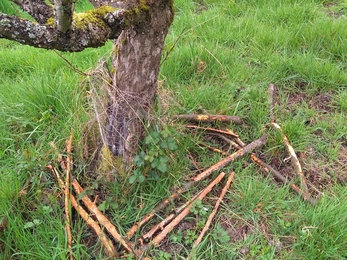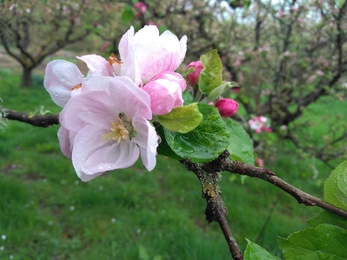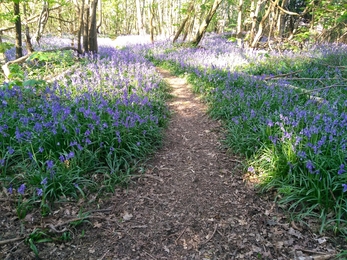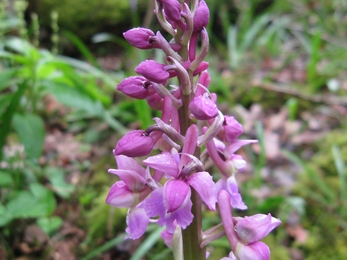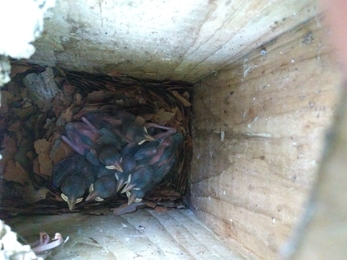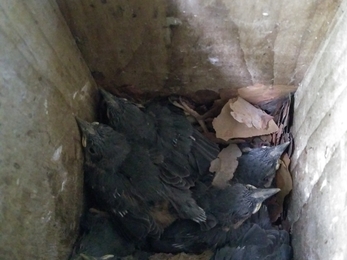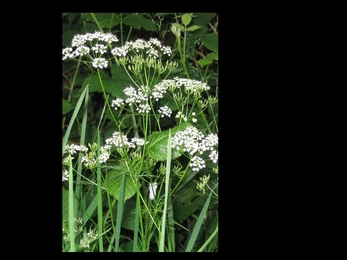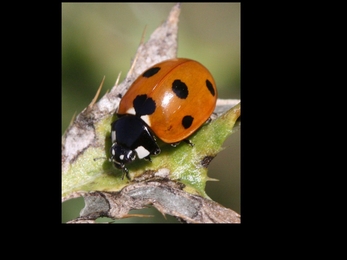As we move on from the pond, the footpath follows the line of an old orchard fence – now lovingly restored by boys from the school on their ‘Community Action’ days. The blossom has been awesome this year, the colour and scent uplifting. Many honey bees, bumbles and solitary bees throng to pollinate the flowers – hopefully, this will mean a great crop. We are interested in the wildlife friendly method of distracting field voles, which are known to seriously damage young fruit trees. They chew all around the bark – preventing the movement up and down of water, nutrients and sap – which ends in death. Winter prunings are laid around the trunk, giving the voles a tasty snack avoiding attacking the trunk!
Country Lane Wander
Lynne & Peter Flower
Past the orchard fence, the footpath dips into a small woodland. Last week the bluebells were at their peak – rich blue, scented carpet. But by the start of May, they are beginning to lose their best. We can see the effect of global warming. Our son was born on 9th May 1975, when he was little we used to walk in the woods on his birthday, and pick just a very small bunch of the very first bluebells to open. On his birthday nowadays, only faded blooms seem to be left! But fat seed-heads take their place.
Scanning the bluebells for a sign of purple we are soon rewarded, as the sunlight flickers through the burgeoning pale green canopy we catch sight of an Early Purple Orchid – a woodland orchid which appears with the bluebells.
As we stroll along, piercing through the sounds of singing robins, blackbirds, chiffchaffs and blackcaps, are the excited piping and trilling notes of a nuthatch. Sure enough, we stand quietly and see a nuthatch pop into a great tit nesting box. Nuthatches happily use tit nesting boxes, finding the hole made for great tits just right. However, that does not stop them from adding their habitual mud defences in and around the hole – just to be sure. Whereas blue and great tits use a mossy base with added feathers and fur, a nuthatch nest is solely built of dried leaves.
As the path opens out at the woodland edge we notice, within the fading bluebells, some fine feathery leaves, some topped with new clusters of tiny white flowers, and identify it as Pignut. It is a member of the carrot family, and the roots carry little brown tubers. These are edible and once widely gathered by country folk. However, if you are in the mood for foraging, remember this family of plants contain some of the most poisonous in the country.
Badgers and wild boar are known to forage for them. However, these seem undisturbed, and we prefer to leave them that way.
We see our first seven-spot ladybird of the year, exploring the stems for aphids. Clearly 3 spots on the side of each wing, and one joined at the top, making 7.
